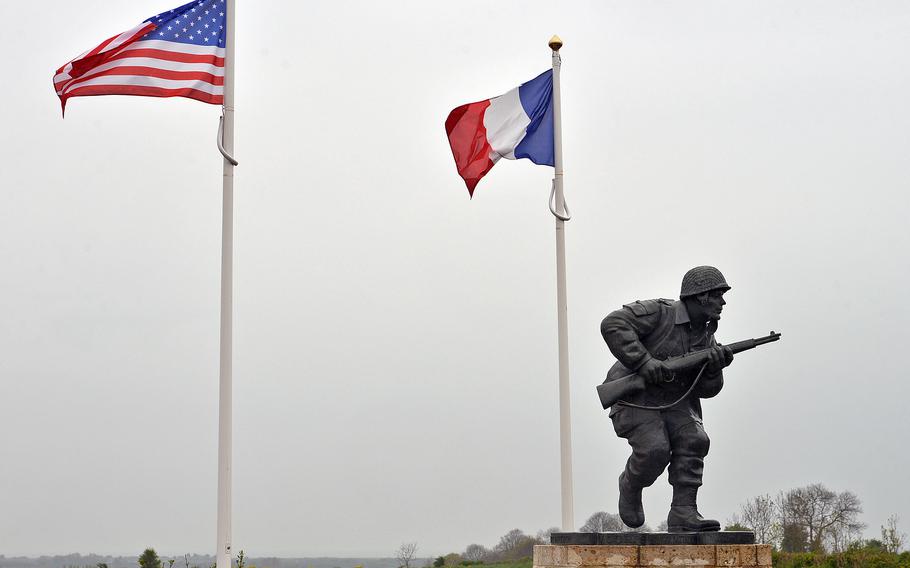
A newer monument on the road between Utah Beach and Sainte-Marie-du-Mont is, as its plaque says, dedicated to those who led the way on D-Day, and depicts Maj. Richard Winters, commander of “Easy” Company — the “Band of Brothers.” A marker dedicated to Company E is nearby. (Michael Abrams/Stars and Stripes)
Seventy years ago, the largest armada ever assembled set off from England for the French coast. On June 6, 1944, 160,000 Allied troops, supported by 700 warships and carried by 2,500 landing craft, assaulted a 50-mile stretch of the Normandy coast in an effort to push the Nazis out from occupied France and drive into Germany. Now, seven decades later, feted by still-thankful French residents, D-Day veterans, their families and friends, along with tourists and history buffs, will return to the invasion beaches — Utah, Omaha, Gold, Juno and Sword — to commemorate the Allies’ efforts and sacrifices.
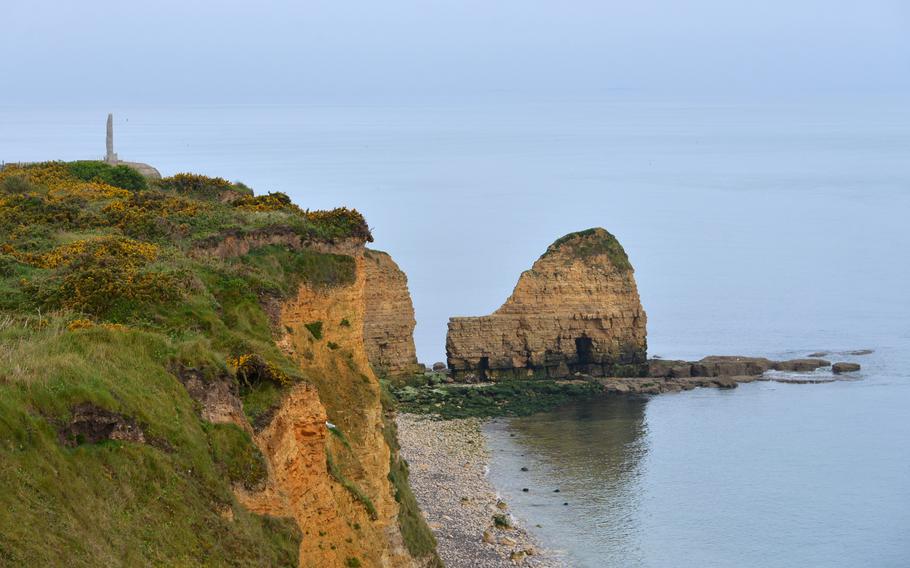
The Ranger Memorial at Pointe du Hoc, left, stands atop the cliffs that Lt. Col. James Rudder and his men of the 2nd Ranger Battalion fought their way up to capture a German gun position. (Michael Abrams/Stars and Stripes)
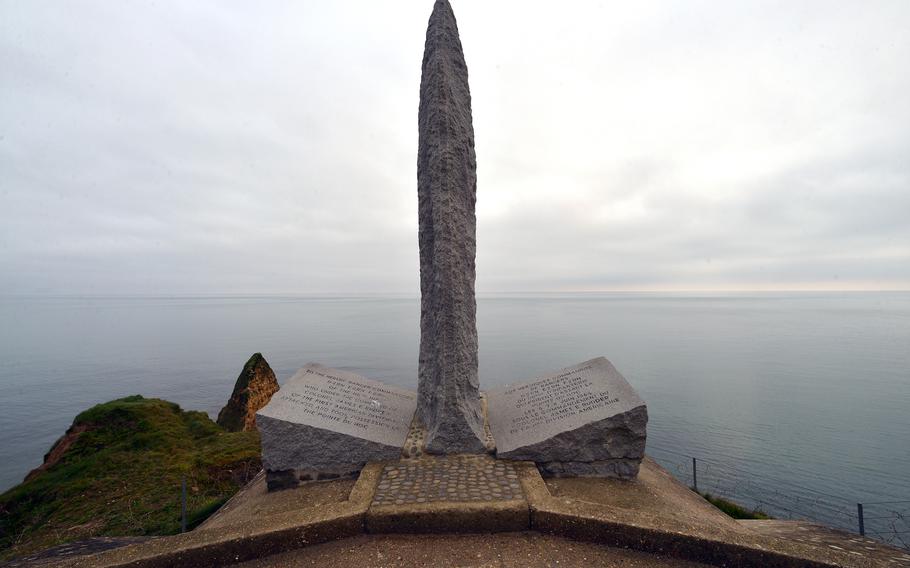
The Ranger Memorial at Pointe du Hoc. Lt. Col. James Rudder and his men of the 2nd Ranger Battalion fought their way up steep cliffs to this point to capture a German gun position that threatened both the Utah and Omaha D-Day landing beaches. They captured the position only to find that some of the guns had been moved and tree trunks were used as props. The guns were soon found, however, and destroyed. (Michael Abrams/Stars and Stripes)
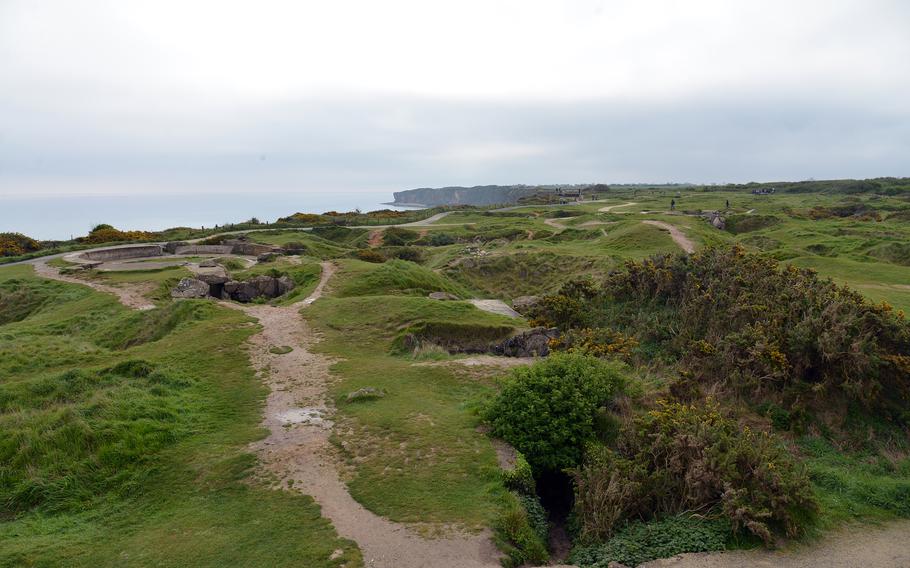
Seventy years after D-Day, Pointe de Hoc, where the U.S. Army’s 2nd Ranger Battalion captured a German gun position, is still scarred with craters from the bombing and shelling. (Michael Abrams/Stars and Stripes)
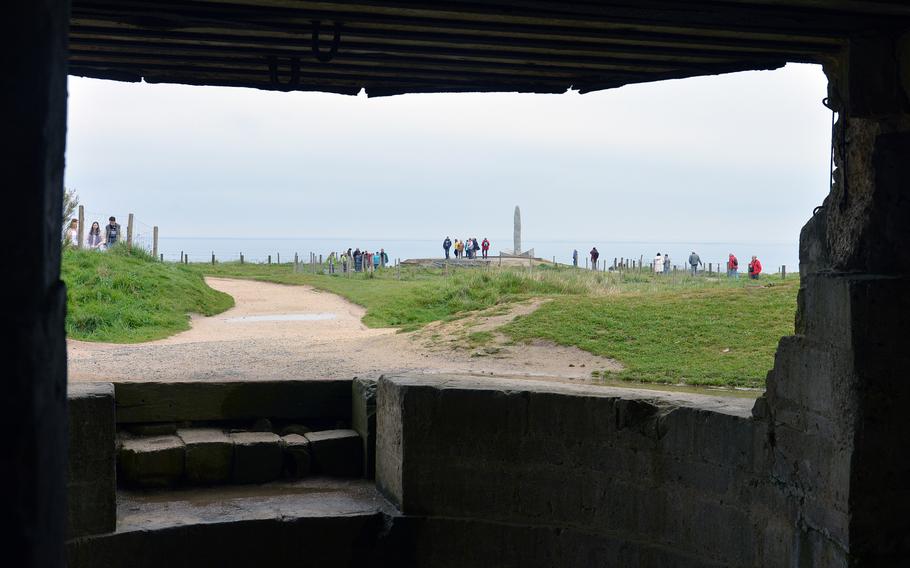
The Ranger Memorial at Pointe du Hoc as seen through the opening of a German gun position. (Michael Abrams/Stars and Stripes)
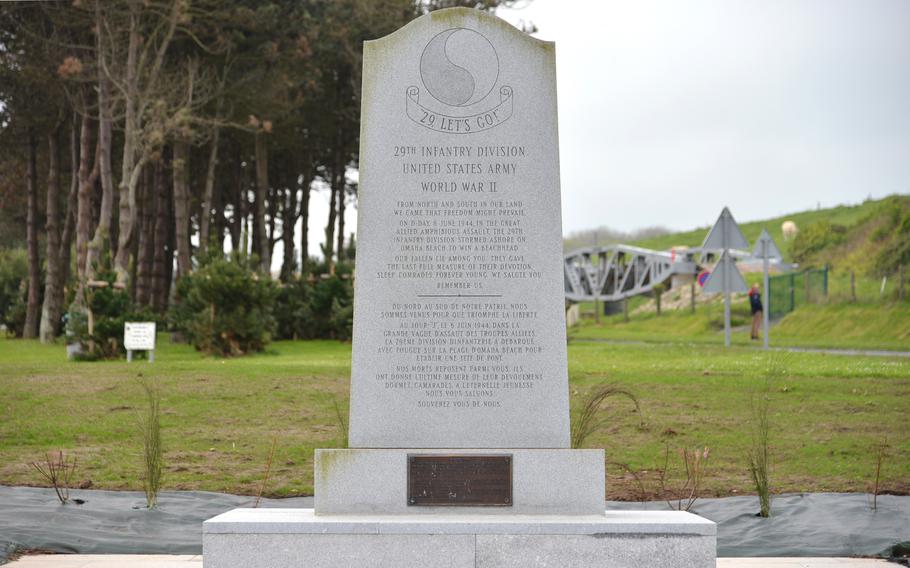
The monument to the 29th Infantry Division at Vierville-sur-Mer on Omaha Beach. The division’s 116th Infantry Regiment was in the first assault wave at Omaha Beach. (Michael Abrams/Stars and Stripes)
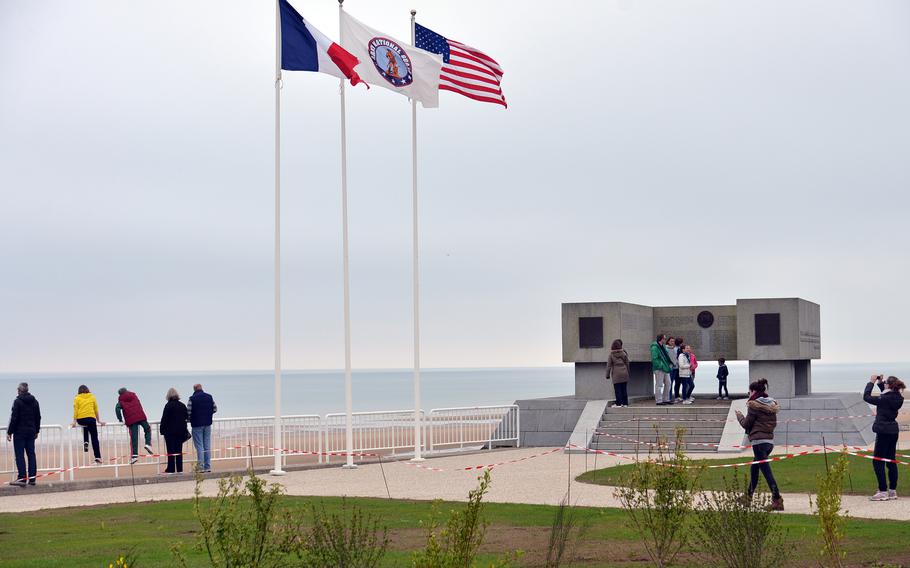
The National Guard Memorial at Vierville-sur-Mer on Omaha Beach stands on a former German gun position. The inscriptions inside the U-shaped monument tell the National Guard’s story in English and French. (Michael Abrams/Stars and Stripes)
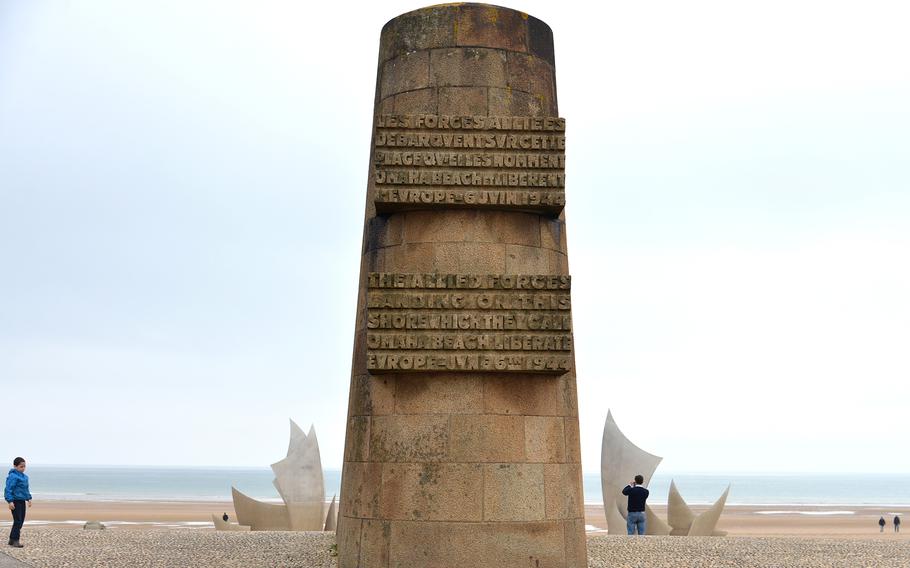
The Signal Monument at Saint-Laurent-sur-Mer on Omaha Beach has a dedication to the 1st Infantry Division on one side and the 116th Infantry Regimental Combat Team on the other. Behind it on the beach is the modern stainless steel sculpture “Les Braves.” (Michael Abrams/Stars and Stripes)
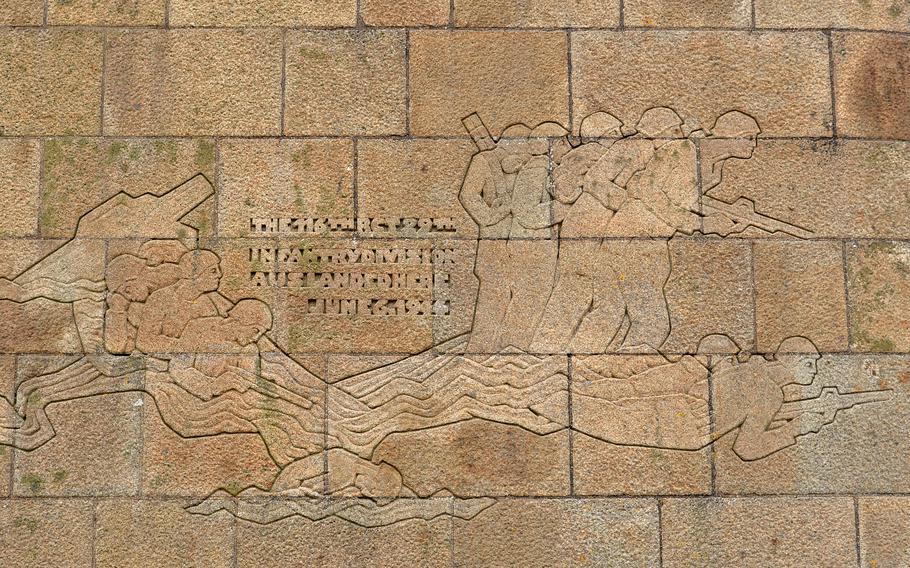
The dedication to the 116th Regimental Combat Team, 29th Infantry Division on one side of the Signal Monument at Saint-Laurent-sur-Mer on Omaha Beach. (Michael Abrams/Stars and Stripes)
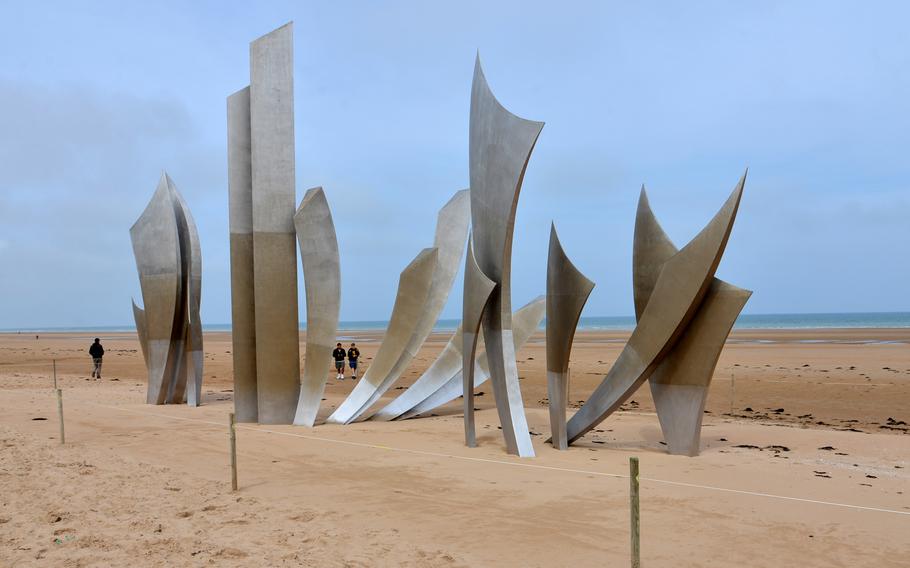
The modern stainless steel sculpture at Saint-Laurent-sur-Mer on Omaha Beach is more than 29 feet high at its tallest point and weighs 15 tons. Its pieces, from left to right, represent the wings of hope, the rise of freedom and the wings of fraternity. (Michael Abrams/Stars and Stripes)
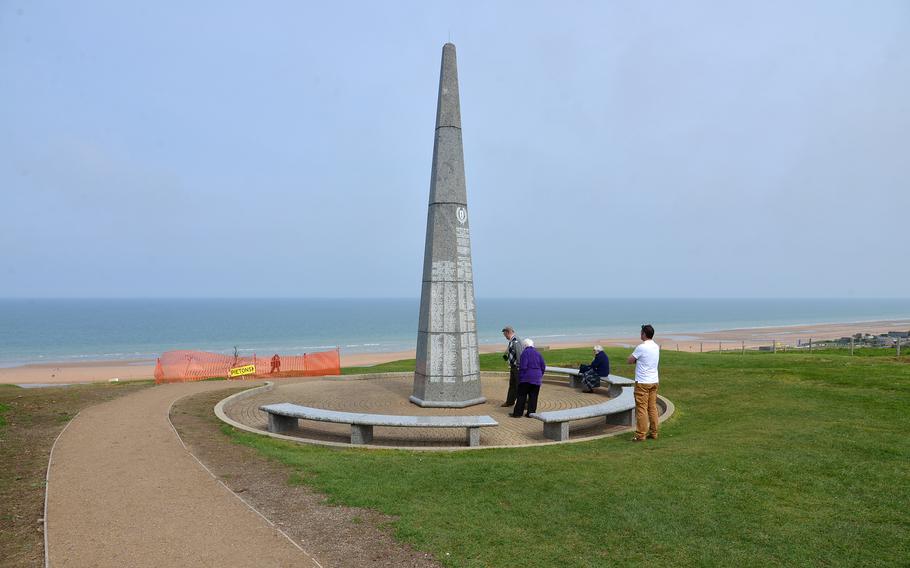
The 1st Infantry Monument stands on a bluff overlooking Omaha Beach, near the Normandy American Cemetery on the outskirts of Colleville-sur-Mer. (Michael Abrams/Stars and Stripes)
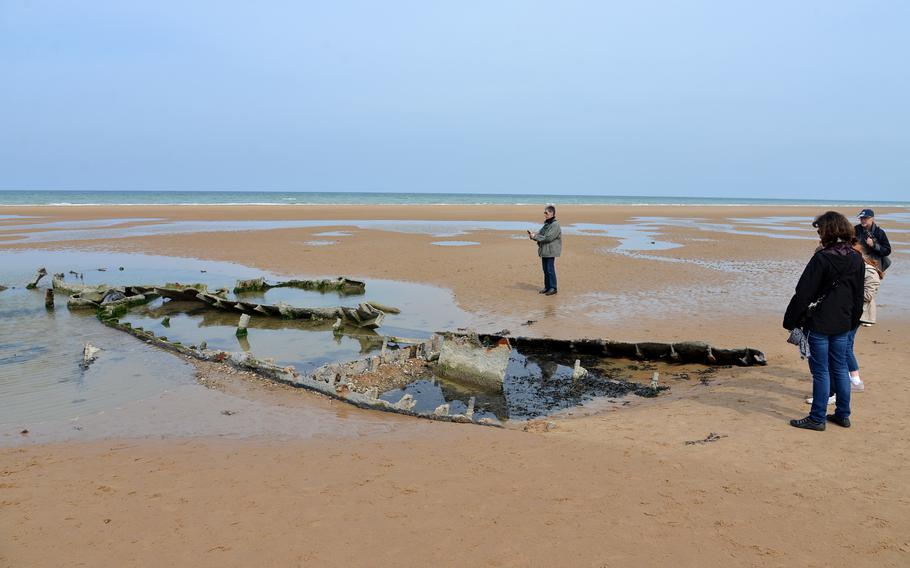
Visitors look at the remains of a world War II landing craft sunk in the sands of Omaha Beach below the Normandy American Cemetery in April 2014. (Michael Abrams/Stars and Stripes)
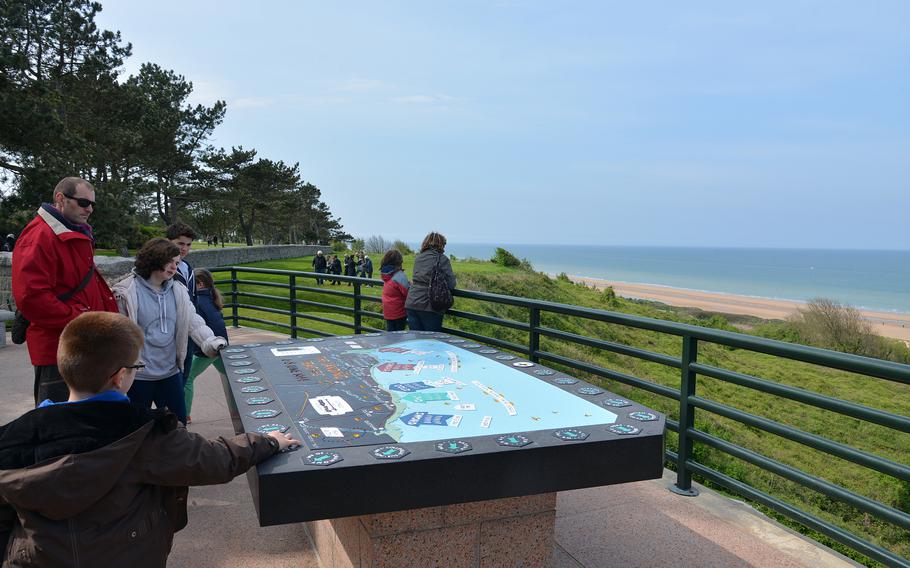
Visitors to Normandy American Cemetery study an orientation table showing all of the invasion beaches. The table overlooks the English Channel and Omaha Beach. (Michael Abrams/Stars and Stripes)
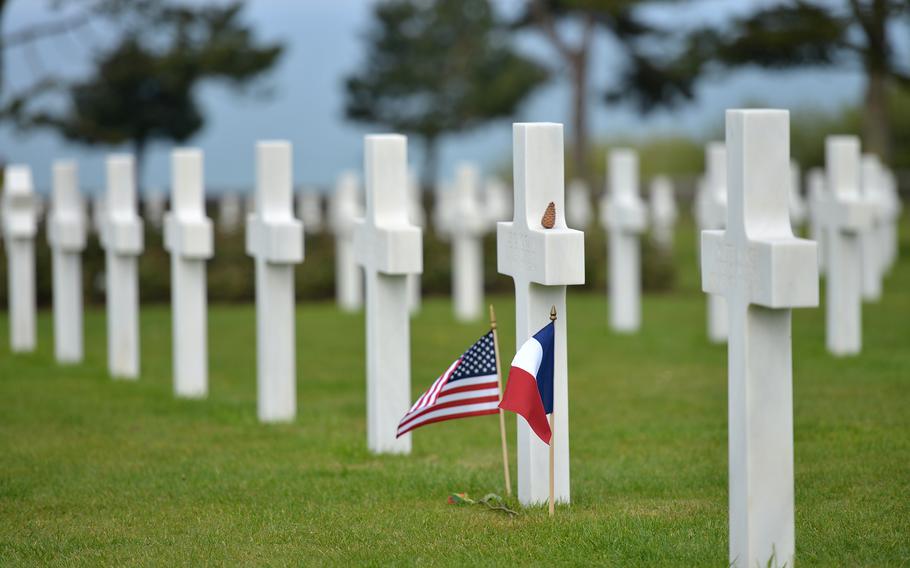
An American flag waves in the breeze beside a French flag before a headstone at Normandy American Cemetery at Colleville-sur-Mer, France. The cemetery is the final resting place for 9,387 American war dead. (Michael Abrams/Stars and Stripes)
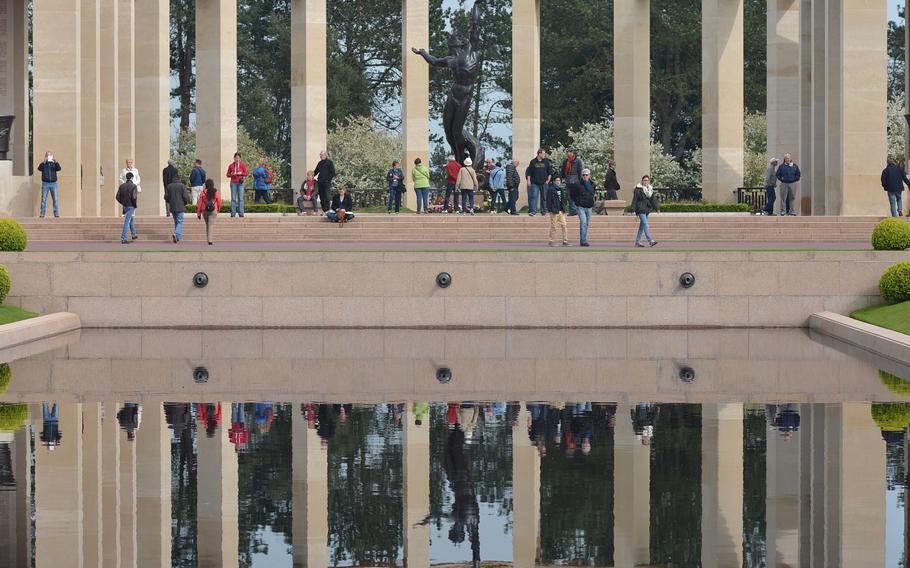
The 22-foot statue “The Spirit of American Youth Rising from the Waves” is reflected in the pool at Normandy American Cemetery at Colleville-sur-Mer, France. (Michael Abrams/Stars and Stripes)
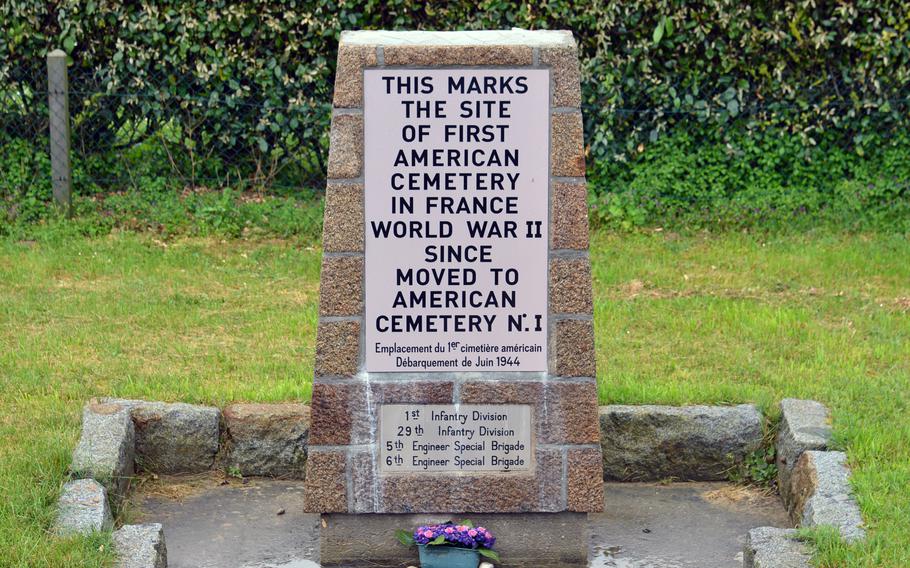
A small monument on Omaha Beach on the edge of Vierville-sur-Mer (look for house number 156) marks where the first American cemetery in France in World War II was once located. The bodies were later relocated. (Michael Abrams/Stars and Stripes)
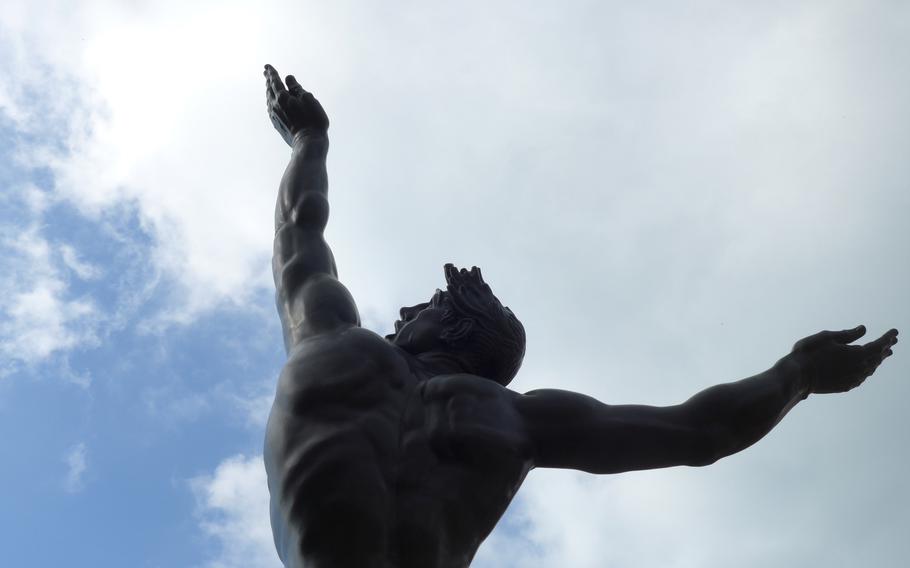
The statue “The Spirit of American Youth Rising from the Waves” is part of the memorial at Normandy American Cemetery at Colleville-sur-Mer, France. (Michael Abrams/Stars and Stripes)
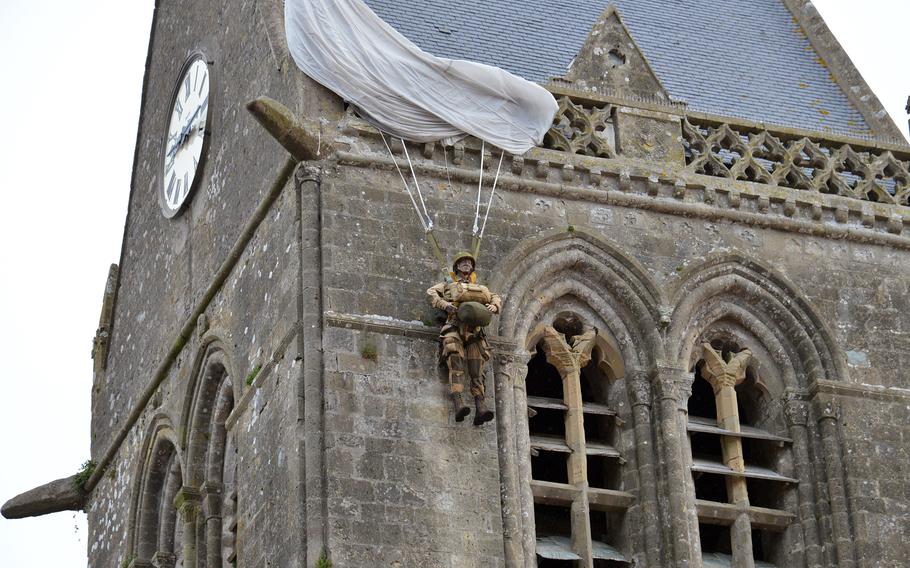
An effigy of Pvt. John Steele, an 82nd Airborne Division soldier, hangs from the steeple at the Sainte-Mère-Église church. Steele’s parachute got caught on the steeple when he jumped on D-Day. He played dead for several hours, but eventually was taken prisoner by the Germans. He later escaped and continued to fight in the war. His plight was retold in the1962 movie “The Longest Day,” where he was played by Red Buttons. (Michael Abrams/Stars and Stripes)
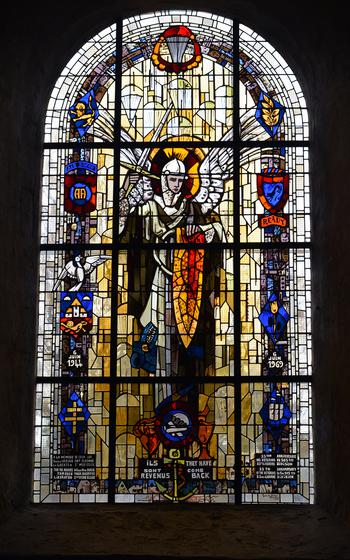
This stained-glass window in the Sainte-Mère-Église church showing St. Michael, patron saint of parachutists, was donated by veterans of the 82nd Airborne Division for the 25th anniversary of D-Day. (Michael Abrams/Stars and Stripes)

A look inside the Waco glider on display at the U.S. Airborne Museum at Sainte-Mère-Église, France, shows the cramped conditions in the aircraft, which was made of fabric, wood and metal. (Michael Abrams/Stars and Stripes)
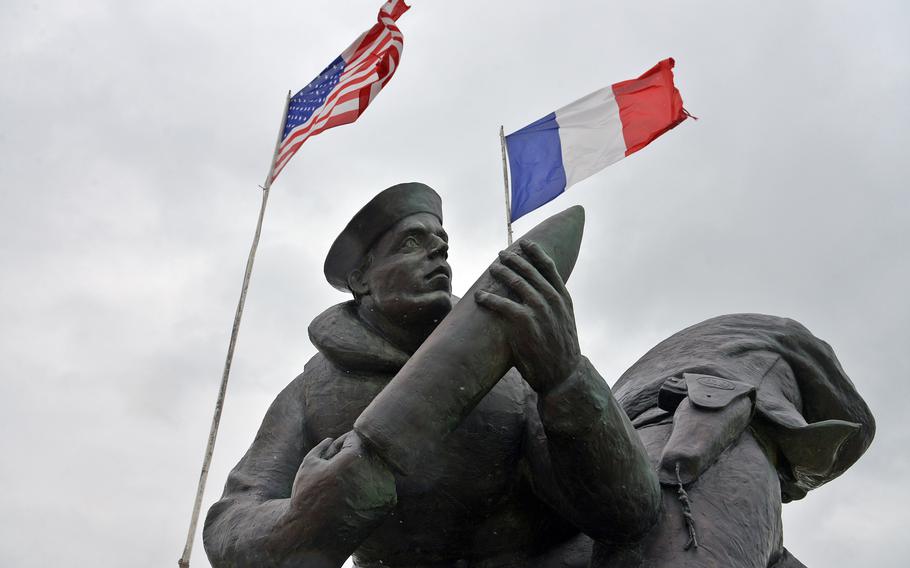
A sailor holds a shell as the American and French flags wave in the wind above the U.S. Navy monument on Utah Beach. The monument was unveiled in 2008. (Michael Abrams/Stars and Stripes)
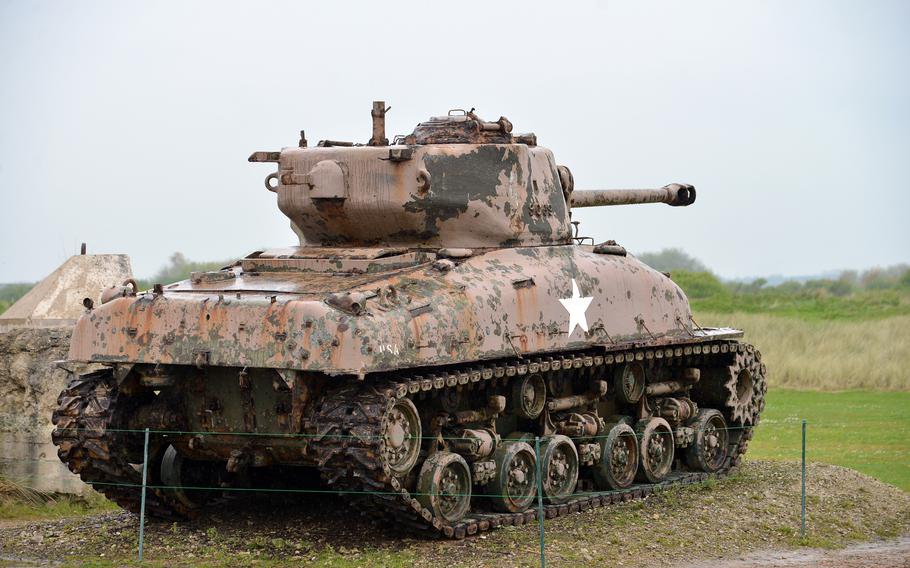
An American tank, looking inland, stands outside the Utah Beach Museum. (Michael Abrams/Stars and Stripes)
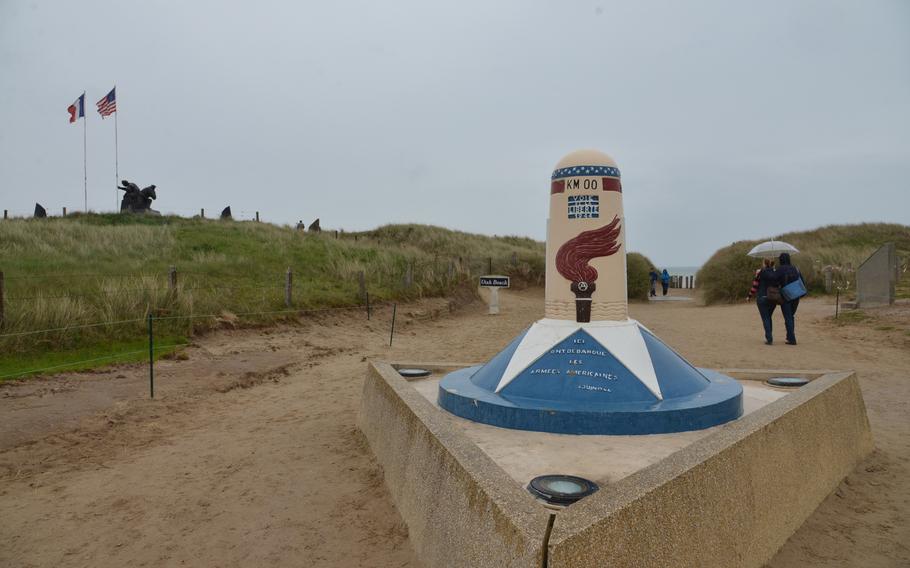
The Kilometer 00 marker on Utah Beach marks the beginning of the Voie de la Liberté, or Liberty Road. The route follows the Americans’ drive across France to liberate the country in World War II. Interestingly, there is a Kilometer 0 marker in Sainte-Mère-Église, as well. (Michael Abrams/Stars and Stripes)
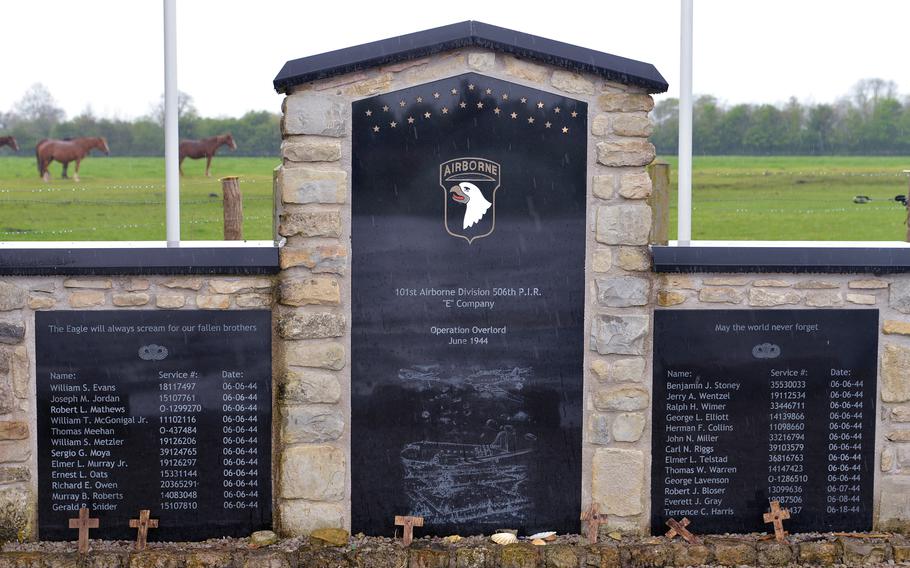
A memorial to Company E, 506th Parachute Infantry Regiment, 101st Airborne Division, the “Easy” Company in “Band of Brothers,” stands on a crossroads near Utah Beach. (Michael Abrams/Stars and Stripes)
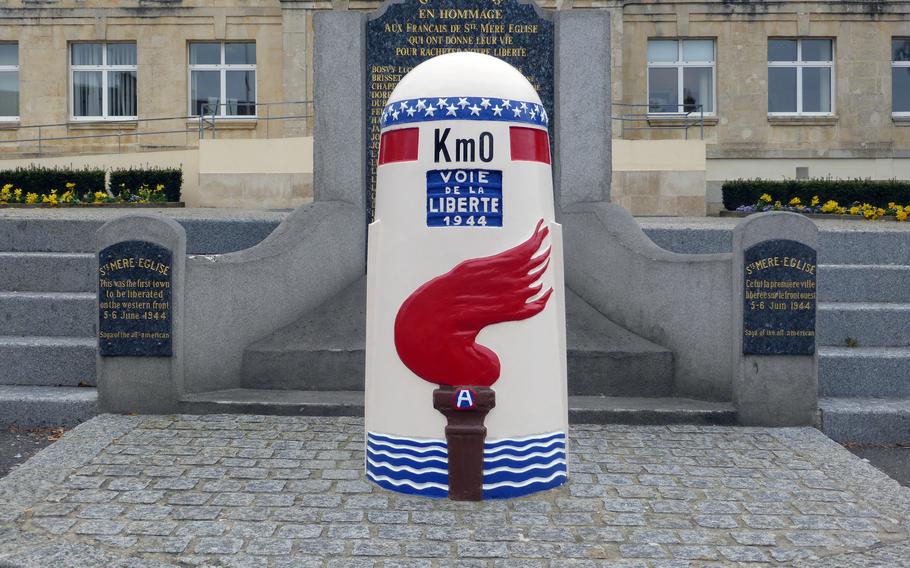
A post marking Kilometer 0 of the Voie de la Liberté, or Liberty Road, stands in front of the Sainte-Mère-Église town hall. The route follows the Americans’ drive across France to liberate the country in World War II. Interestingly, there is a Kilometer 00 marker at Utah Beach, as well. (Michael Abrams/Stars and Stripes)
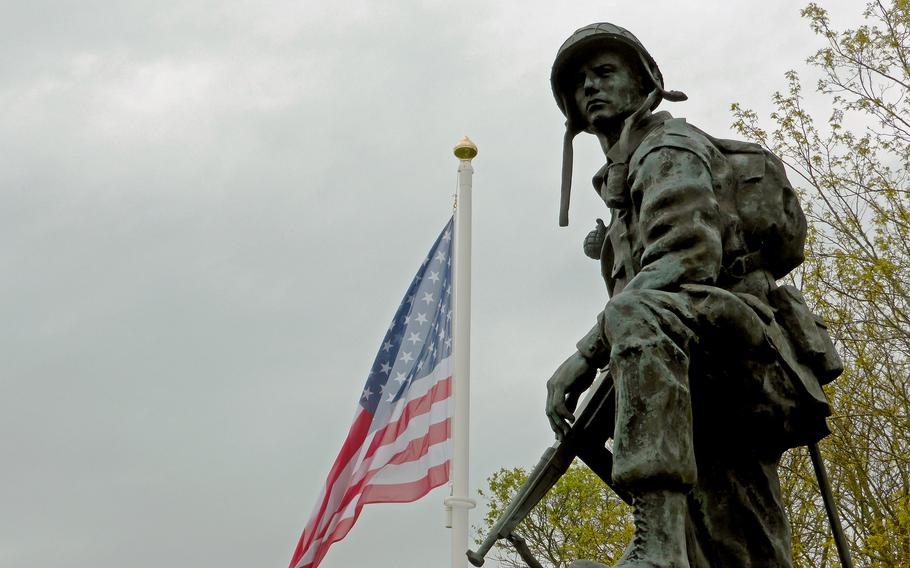
The statue of “Iron Mike” standing in a field at La Fiere, near Sainte-Mère-Église represents the paratroopers of the 82nd and 101st Airborne Divisions who fought in the area. The monument is located next to the Bridge in La Fiere where members of the 505th Parachute Infantry Regiment and 325th Glider Regiment fought against repeated German attacks to hold the bridge, June 6-9, 1944. (Michael Abrams/Stars and Stripes)
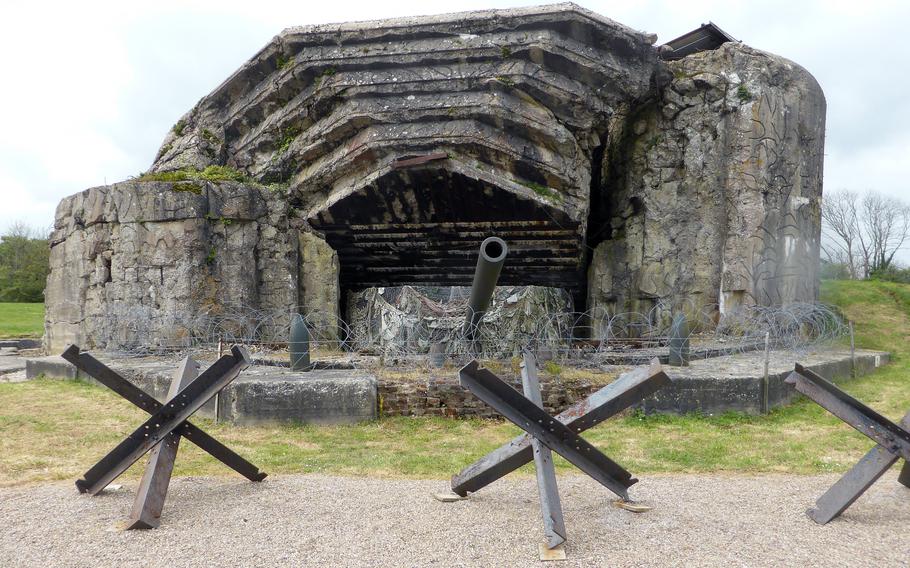
A German gun points toward Utah Beach at the Crisbeq Battery Museum, near Crisbeq, France. Here, visitors can walk through and around the German gun emplacements and bunkers. (Michael Abrams/Stars and Stripes)
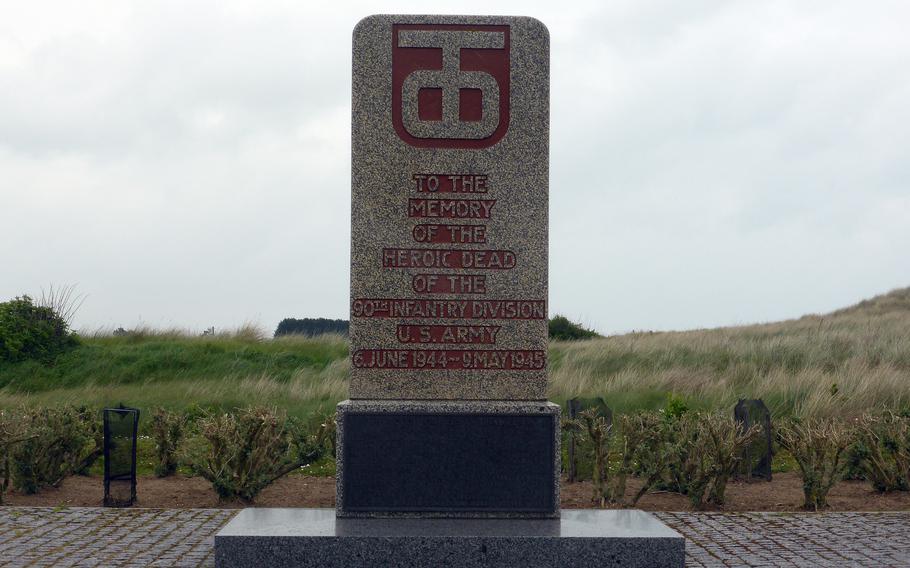
The 90th Infantry Division memorial on Utah Beach. The “Tough Hombres,” as they were known, fought from Utah Beach to Czechoslovakia during the war. (Michael Abrams/Stars and Stripes)
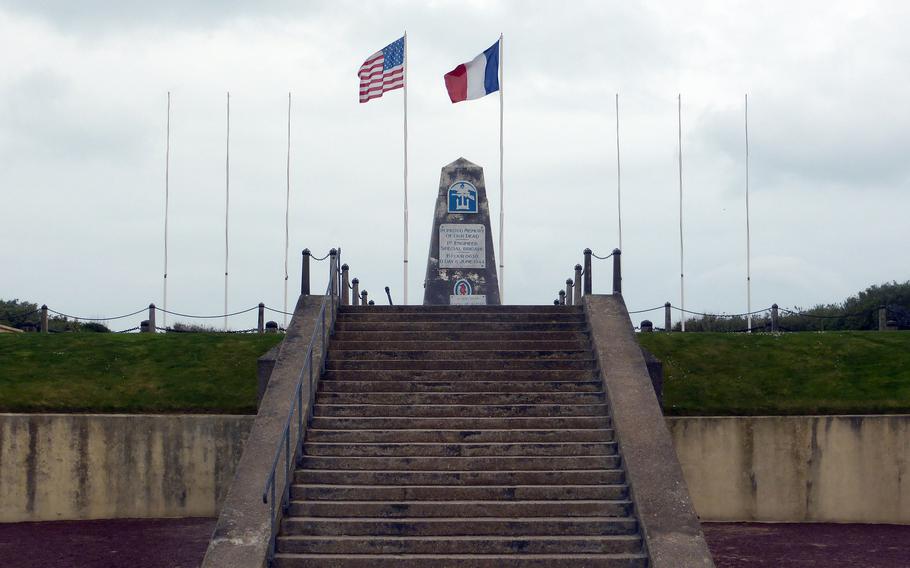
The monument to the 1st Engineer Special Service Brigade stands on top of a German bunker on Utah Beach. (Michael Abrams/Stars and Stripes)